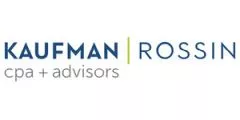Leverage synergistic strategies for tax savings in commercial real estate
Commercial real estate developers, owners and investors can optimize their income tax strategies by combining two powerful tools: the 179D tax deduction and cost segregation studies. Individually, these incentives provide significant benefits, but together, they create a synergy that maximizes tax savings and boosts return on investment.
Introducing the 179D tax deduction
The Internal Revenue Code (IRC) Section 179D tax deduction, also known as the Energy Efficient Commercial Buildings Deduction, is a tax incentive designed to encourage energy efficiency in the design of commercial and multifamily properties.
Owners of eligible building structures, as well as the designers of certain government or tax-exempt entities owned buildings, can claim the 179D income tax deduction for integrating energy-efficient HVAC, lighting, and/or building envelope systems to a new or remodeled building. To qualify, buildings must meet specific energy efficiency standards established in the Energy Policy Act of 2005.
The deduction allows for a potential maximum benefit of up to $5.36 per square foot for eligible buildings placed in service in 2023 and up to $5.65 per square foot for buildings placed in service in 2024.
Introducing cost segregation
Cost segregation is a strategic tax planning tool that accelerates the depreciation of a commercial real estate property or residential rental property by reclassifying its components into shorter recovery periods.
Property owners can depreciate certain elements over 5, 7, or 15 years instead of the standard 27.5 or 39 years for commercial buildings by segregating assets into categories such as personal property, land improvements, qualified improvement property, and building components. The costs of certain assets determined through the cost segregation analysis can also be eligible for bonus depreciation which in certain case enable the full depreciation of these assets in the year the building was acquired or constructed.
Cost segregation provides immediate tax benefits by front-loading depreciation deductions, resulting in deferred tax liabilities and increased cash flow available for new investments.
Combining the powerhouses: 179D deduction and cost segregation
When used together, the 179D tax deduction and cost segregation studies complement each other and magnify the tax benefits for commercial real estate and certain residential rental owners.
The 179D tax deduction acts as an accelerated depreciation deduction for energy-efficient building systems, such as HVAC, lighting, and building envelop systems, which cannot otherwise benefit from accelerated depreciation via cost segregation. On the other hand, cost segregations studies accelerate the depreciation of items and components within a building that do not contribute to the amount of the 179D deduction.
The tasks associated with both strategies can be mutually beneficial. The on-site inspection and documentation required to certify a building for the 179D tax deduction can contribute to the cost segregation analysis, and the detailed engineering report involved in cost segregation studies provides certain evidence to support the amount of 179D deduction that can be captured for the building.
Example of real-world benefits
Let's consider a hypothetical scenario to illustrate the potential tax benefits generated by combining the 179D deduction and a cost segregation study. Suppose a real estate developer spends $15 million to build a 250,000 square-foot retail building. Through a cost segregation study, it is determined that $4 million of the $15 million in costs can be reclassified as personal property and land improvements. At a bonus depreciation rate of 80% for personal property and land improvements, this cost segregation analysis would yield a depreciation deduction of $3.5 million in year one.
In addition, if the project is built to the latest energy codes and qualifies for the 2023 maximum 179D deduction of $5.36 per square foot, another $1.3 million can potentially be taken as a 179D deduction in the year the property is placed in service. As a result of combining both strategies, the building owner could be deducting nearly $4.8 million the year the property is placed into service.
This example demonstrates how significant the immediate tax savings from employing both strategies can be, potentially reducing tax liabilities and increasing cash flow. By harnessing the synergistic power of the 179D tax deduction and cost segregation studies, commercial real estate developers, owners and investors can unlock significant tax advantages. Aligning energy-efficiency studies with cost segregation analyses can help maximize deductions, accelerate depreciation, and enhance cash flow.
Cost segregation and 179D involve principles of both taxation and engineering, so taxpayers who want to take advantage of these strategies should work with a professional tax firm that has expertise in both fields. That combined expertise will help them maximize the benefits of these powerful tax tools.
The content of this article is intended to provide a general guide to the subject matter. Specialist advice should be sought about your specific circumstances.



